|
|
|
Winter 2020
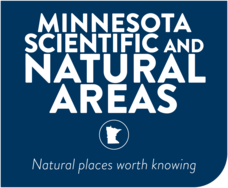
Nature Notes is the Minnesota Scientific and Natural Areas quarterly newsletter. Here's what's in store this issue!
|
The Rare and Wild: Oak Savanna
Learn more about one of the rare native plant communities that Scientific and Natural Areas protect in this 2020 series about the “Rare and Wild” in Minnesota!
Derek Anderson, Botanist/Plant Ecologist | Minnesota Biological Survey
Dry Barrens Oak Savanna at Uncas Dunes SNA in Sherburne County. Photo by Kelly Randall.
What are they?
When one hears the word savanna, your mind may jump to a scene of lions and wildebeests in Africa. As it turns out, savanna is also a native plant community that you can find right here in Minnesota. Historically, the oak savanna was a dynamic community that existed where the prairies of the west met the forests of the east. Over thousands of years, a dance has played out between prairie and forest. Trees and shrubs would move into the grasslands. Periodically, prairie fires would sweep through the landscape killing back those woody plants and allowing the fire-adapted grasses and herbaceous (wildflower) species to thrive once again. Years would pass, the trees and shrubs would again move into the grasslands, only to again be driven back by fire.
However, not all fires nor all woody species are equal. Tree species such as bur oak also became adapted to withstand moderate fires. The result of this adaptation coupled with nuances of the landscape that reduced the intensity of fires (such as small streams and steep topography) led to the formation of the oak savanna in Minnesota. This native plant community often has a park-like appearance. Prairie grasses and herbaceous species dominate the ground layer and larger, sprawling oak trees are scattered throughout the community.
Savanna then and now – The rough extent of oak savanna prior to European settlement (from Marschner Map of Original Vegetation) in orange, with current oak savanna mapped by the Minnesota Biological Survey in black.
Where are they in Minnesota?
In Minnesota, oak savanna would have generally been found in a broad band along the prairie-forest border, running from Kittson County in the northwest to the bluffland counties in the southeast. Today this is one of the rarest plant communities in the state. In fact, less than one percent remains on the landscape since European colonization. There are many factors that resulted in the loss of this community. One of the largest contributors would have been the large-scale conversion of the landscape for agricultural purposes. Other factors contributing to the loss of this community include residential expansion and the suppression of periodic fire disturbance. Without these fires, the savanna landscape slowly converts to woodlands, and forests. Today, fire suppression, sand and gravel mining, and invasive species are some of the biggest threats to this rare community.
Why are they important?
Oak savanna plant communities are wonderful places for nature-based recreation. The mosaic of trees, shrubs and prairie grasses that make up the oak savanna plant community provides diverse habitats for wildlife and plants. Several species of birds utilize this community. These include the Lark Sparrows, Field Sparrows, Clay-colored Sparrows, Eastern Towhee and the Eastern Whip-poor-will. Leonard’s Skipper, a species of special concern, is a butterfly species you might see here too. If you can visit an oak savanna in the late spring or early summer you may be fortunate enough to find kitten-tails in flower. This threatened plant species seems to prefer the dappled sunlight that filters through the oak trees on the savanna.
Flowering kitten-tails in Dakota County. Photo by Derek Anderson.
Whether you enjoy hiking, wildlife viewing or nature photography, visiting an oak savanna is well worth your time if you are lucky enough to find one. Fortunately, the Scientific and Natural Areas program has protected this rare community at places like Uncas Dunes SNA, Helen Allison Savanna SNA and St. Croix Savanna SNA.
Back to top
|
|

Site Highlight: St. Croix Savanna
David Minor, SNA communications outreach specialist
|
St Croix Savanna SNA photo collage through several months. From left to right: April 2019 (before prescribed burning), April 2019 (after prescribed burn), May 2019, July 2019, August 2019, November 2019, and January 2020. Photos by David Minor.
For the past two years I have served as a Conservation Corps MN & IA placement in the Scientific and Natural Areas Program as the communication outreach specialist. One of my projects was to document St. Croix Savanna SNA through a year. It started as a simple photo project to document before and after a prescribed burn, but it ended up being a web project with photos, video, and some written text about prescribed fire. I have written about this project several times over on the Conservation Corps MN & IA blog. Over the course of the 10+ month project, I visited St. Croix Savanna 7 times. Each time my experience was a little bit different.
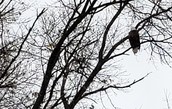
In the early spring, I was dutifully watched by various raptors. A Bald Eagle sat in a tree while its mate circled in the sky. Later, while walking along the edge of a prairie reconstruction, an Osprey called and swooped high above, warning that I was getting a little bit too close to its nest. Since St. Croix Savanna SNA sits on the bluffs of the St. Croix River valley, it is an excellent spot to go birding. Just grab those binoculars, bird list, and remember to give that Osprey plenty of room.
Throughout the rest of the spring and summer, I walked through the prairie and was met with a different display of wildflowers in bloom. From pasque flowers in early spring to goldenrods in autumn, each taking turns on the prairie “stage.”
In the fall, I was absorbed by the texture and subtle colors of the prairie grasses and the golden leaves of the oak savanna. This might be my favorite time to go sit in a prairie. The fuzzy seed heads of little bluestem with the red and golden stems waving lazily in the breeze. In prairies, you get awesome fall textures as well as fall colors.
During all these trips I stayed near the northern end of the SNA. When I returned in the winter, I took some time to walk to the southern end of the SNA. That hike is worth it. I walked along the edge of the reconstructed prairie, past the spot where the Osprey had warned me to back off in the spring, through the oak savanna, and onto the bluff prairie with a clear overlook of the St Croix River valley. The view from atop the bluff is awesome
|
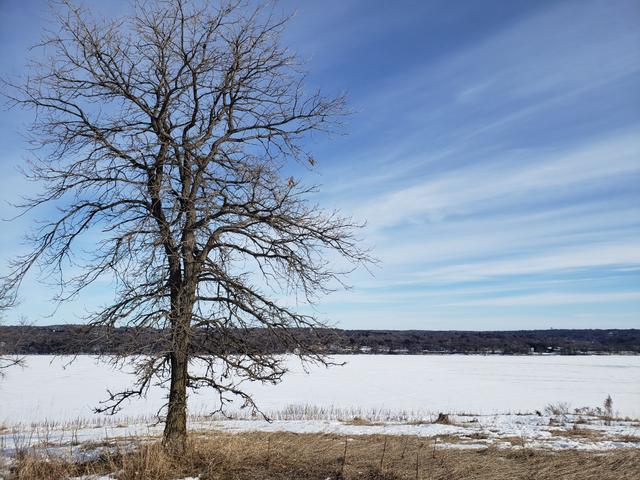 |
Overlooking the St. Croix River in winter. Photo by David Minor.
St. Croix Savanna SNA is great any season of the year. If you want to visit St Croix Savanna SNA for yourself, be sure to check out the detail map, directions, species lists, and more information available online.
Back to top

SNA 2020 Self-Guided Bioblitz Series
Kari Wallin, SNA volunteer outreach specialist
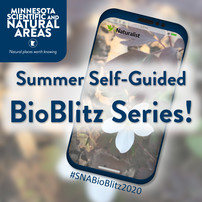
The SNA program held a series of Self-guided Bioblitzes using iNaturalist throughout the summer this year. These bioblitzes were held at five selected sites, and open for two weeks for participants to visit and make observations that were automatically collected in an online database. After each bioblitz was complete, results were shared and data was used for updating species lists and restoration project monitoring.
See the updated plant lists (wildflowers and ferns, grasses and sedges, trees and shrubs)
All species observation may also be seen on the 2020 SNA bioblitz page on iNaturalist.
A big thank you to everyone who participated by submitting observations and identifying them!
Here are a few highlights from the series:
Over the course of the summer, 42 people visited the selected SNAs. They submitted 2,623 observations of 666 different species! This data will be very helpful for updating species lists and managing these natural areas.
|
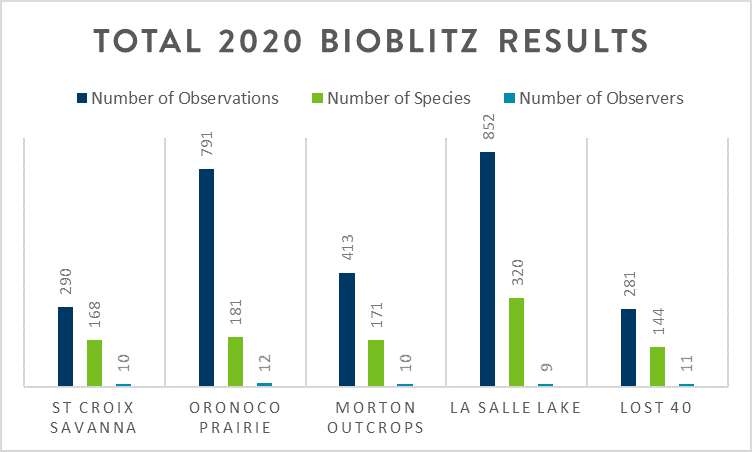 |
Of special note, one observer found a new county record for a plant at Morton Outcrops SNA! Yellow giant hyssop (Agastache nepetoides) had not been documented before in Renville County!
Yellow giant hyssop (Agastache nepetoides), a county record discovered during the Morton Outcrops SNA bioblitz.
Thank you again to all who participated. Stay tuned for possible 2021 SNA Self-guided Bioblitzes!
Back to top

Notes from Site Stewards
Site stewards monitor SNAs across Minnesota. Their observations provide valuable information to the SNA Program. Here are some interesting notes from recent reports.
-
Lost Valley Prairie SNA site stewards Jim Smetana, Steve Poole and Sara Brokaw were able to hold one limited capacity volunteer event in October, “We split into two groups and collected seeds, observing COVID protocols of course. Collected - big bluestem, little bluestem, purple prairie clover, sunflower, grey-headed cone flower, horse gentian, stiff gentian, liatris (more than one species), mountain mint, bergamot, prairie drop-seed, leadplant, stiff goldenrod, asters, showy goldenrod, and one golden alexanders plant with seeds!”
- Elizabeth McLaughlin visited Burntside Islands SNA in September, “We boated in to the shallows between the main island of Hayes and the smaller western one. Pretty brushy so we clambered along the rocky shore until we found a way in. Lots of deadfall, blowdown (this was the south side of the island). Pretty brushy, made our way up the ridge, visually confirmed it was pretty impassable in the north side as well. We boated around all of the islands and all the signs look good. Took out some garbage but it was just a super rusted piece of rebar in the shallows and a can (again, pretty old). No new signs of visitation.”
- New steward Bart Bevins made his first visit to Langhei Prairie SNA on November 6, and reported information for site managers such as signage, site use and photos while exploring his new site. He noted some pheasants and a couple of deer running across the area.
- Nancy and Gregory McDaniels visited Shooting Star Prairie SNA in September, “Shooting Star Prairie had a few blazing stars with flowers and butterflies. Saw bottle gentians and then, lo and behold! Very blue! [Downy] gentians. Never seen those, except at Roscoe Prairie SNA.”
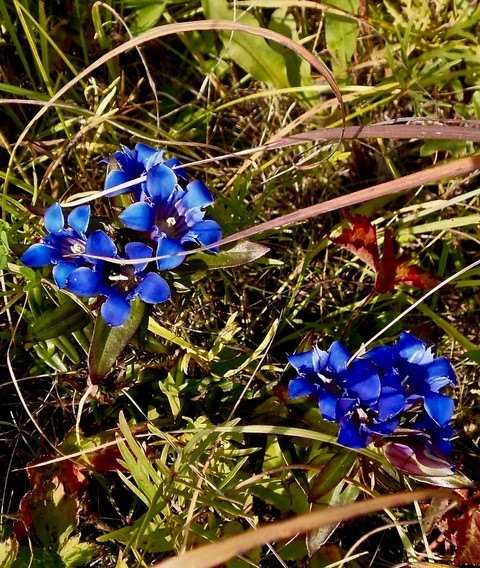 |
Downy gentians at Shooting Star Prairie SNA. Photo by Nancy and Gregory McDaniels.
Thanks for all the work you do, SNA stewards!
Back to top

|
|
|
Nature Notes is the Minnesota Scientific and Natural Areas quarterly newsletter (archive online). It seeks to increase interest, understanding and support of natural areas while promoting involvement in the protection of these special places. Contact us directly at sna.dnr@state.mn.us.
Funding for this project was provided by the Minnesota Environment and Natural Resources Trust Fund as recommended by the Legislative-Citizen Commission on Minnesota Resources (LCCMR).
|
|
|
|